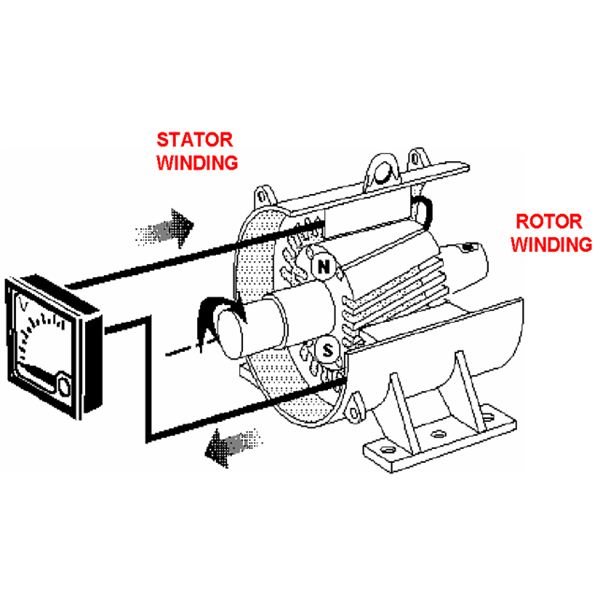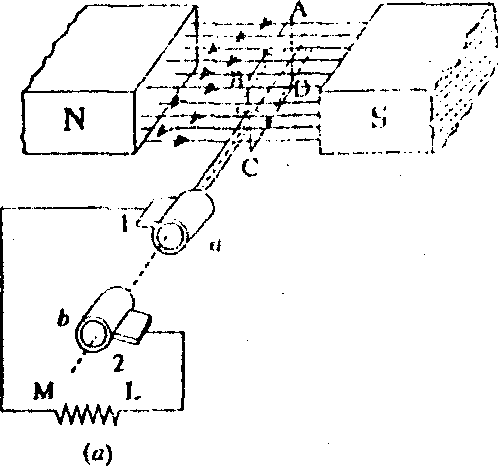
Alternating voltage may be generated by rotating a coil in a magnetic field or by rotating a magnetic field within a stationary coil. The value of the voltage generated depends, in-each case, upon the number of turns in the coil, strength of the field and the speed at which the coil or magnetic field rotates.
Equations of the Alternating Voltages and Currents
Consider a rectangular coil having N turns and rotating in a uniform magnetic field with an angular velocity of ? radian / second as shown in Figure. Maximum flux Fm is linked with the coil when its place coincides with the X-axis.
In time t seconds, this coil rotates through an angle O = Ot.
In this deflected position, the component of the flux which is perpendicular to the plane of the coil is F = F m cos Ot.
m cos Ot.
 m cos Ot.
m cos Ot.
Hence, flux linkages of the coil at any time are NF = NFm cos Ot.
According to Faraday's Laws of Electromagnetic Induction, the e.m.f induced in the coil is given by the rate of change of flux-linkage of the coil. Hence, the value of the induced e.m.f at this instant (i.e where O = Ot) or the instantaneous value of the induced e.m.f is
e = NFm sin Ot volt ----------(i)
When the coil has turned through 90 i.e. when O = 90, then sin O = 1, hence e has maximum value, say Em. Therefore, from above equation we get
Em = NFm = 2fNBmA volt
f= frequency of rotation of the coil in rev/second. Substituting this value of E in Eq (i) we get
e = Em sin Ot
Similarly, the equation of the induced alternating current is
i = Im sin Ot
provided the coil circuit has been closed through a resistive load.



No comments:
Post a Comment